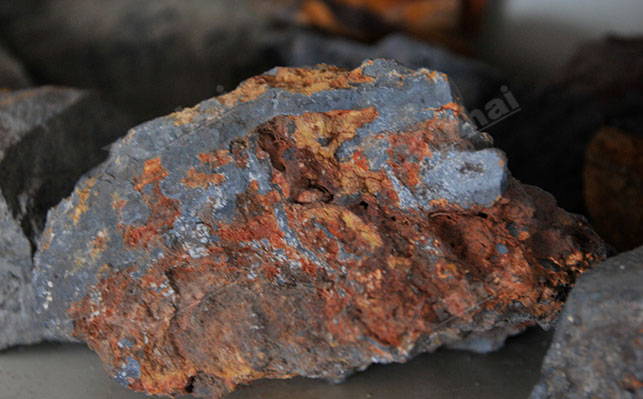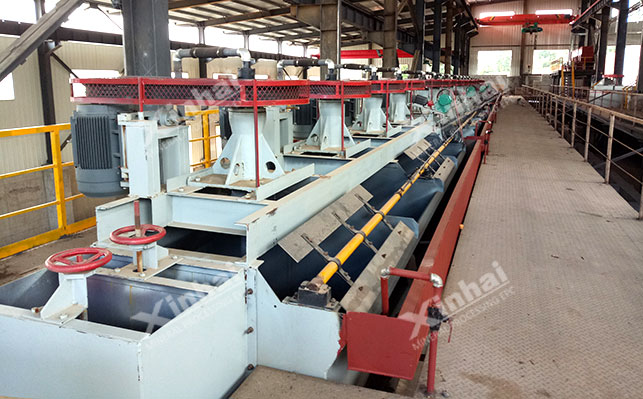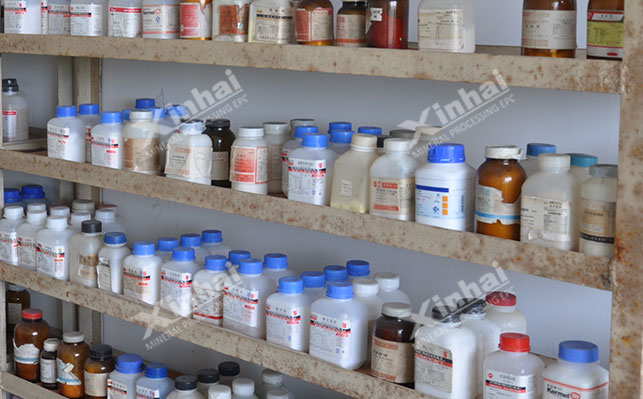
15311826613
Click to add WeChatAs a key raw material for the pillar industries of my country's national economy, iron ore is vital to the country's economic development. With the reduction of easily selectable iron ore resources, iron ore resources have gradually shown the characteristics of more lean ores, fewer rich ores, more associated minerals, complex ore composition, and fine embedded particle size, which increases the difficulty of mineral processing. Common types of iron ore include hematite, limonite and siderite. In the iron ore beneficiation process, a single gravity separation or magnetic separation process is sometimes difficult to produce iron concentrate that meets the grade requirements, especially for fine-grained embedded iron ore, which usually needs to be further purified by flotation. Iron ore flotation methods mainly include direct flotation, reverse flotation, direct and reverse flotation, and combined flotation. In order to improve the beneficiation efficiency of iron ore, it is necessary to comprehensively consider three factors: iron ore type, flotation environment and flotation reagent.
The diversity and complexity of iron ore types have an important impact on the selection of flotation process, which is mainly based on the grade, material composition, intercalation characteristics, symbiosis, and mudification during grinding. The choice of flotation method is also different for different types of iron ore.

Fine-grained limonite usually adopts direct flotation or reverse flotation process to improve its recovery effect. However, since limonite is easy to mud, which seriously affects the flotation effect, it may be necessary to de-sludge treatment or strengthen the dispersion of ore before flotation. The flotation treatment of hematite is selected by direct flotation or reverse flotation according to its particle size and floatability. Coarser hematite is more suitable for reverse flotation, while finer hematite can be treated by direct flotation. Siderite can be separated by direct flotation or reverse flotation.
The flotation environment, especially the change of pH value, is crucial to the flotation effect of iron ore. Different iron ores have different adaptability to pH value, which directly affects the recovery rate of minerals. Hematite has strict requirements on pH value, and its suitable recovery rate occurs in the range of pH value between 6.5-7.5. The flotation of siderite selects the corresponding direct flotation or reverse flotation process according to the different pH values. In a strongly alkaline environment, cationic collectors are usually used for flotation; in a neutral medium, anionic collectors are used. The anionic collector reverse flotation process is to add calcium salts to a strongly alkaline medium to activate quartz, and adjust the pH value to above 11 by mixing sodium hydroxide and sodium carbonate. The cationic collector reverse flotation process is carried out under the condition that the pH value is adjusted to 8-9. To ensure the flotation efficiency and concentrate quality of iron ore, the pH value in the flotation environment is controlled according to the type and characteristics of the ore, and the collector and depressant are reasonably selected.

Commonly used flotation reagents for iron ore mainly include cation collectors, anion collectors and depressants. Cationic collectors, such as amines, are often used in the flotation of iron ore due to their simple structure, low water quality requirements, and low temperature resistance. They are suitable for collecting quartz and silicate minerals. Anionic collectors, including fatty acids, fatty acid soaps, etc., although their selectivity is not as good as cationic collectors, can effectively inhibit gangue minerals by using them in combination with inhibitors.

Hematite is a weakly magnetic mineral. In the flotation process, sodium carbonate and water glass are used as dispersing regulators, starch is used as a depressant for hematite, and oleic acid and amine mixed collectors are used for flotation of silicate minerals. The flotation process of siderite includes positive flotation and reverse flotation. Direct flotation is divided into acidic direct flotation and alkaline direct flotation. Fatty acid collectors are used in neutral or weakly acidic media, and oxidized paraffin soap and tall oil are used in weakly alkaline media. Reverse flotation is divided into anionic collector reverse flotation and cationic collector reverse flotation according to the different collectors used. Anionic collector reverse flotation is to add calcium salt to activate quartz in a strong alkaline medium, mix sodium hydroxide or sodium hydroxide and sodium carbonate, adjust the pH value, and use starch or lignin sulfonate as an iron mineral inhibitor, and use fatty acids and their modified agents as collectors. Cationic collector reverse flotation adjusts the pH value of the pulp through sodium carbonate, uses starch, dextrin, tannin, etc. to inhibit siderite minerals, and uses amine collectors to float quartz gangue. The collectors are mainly ether amines, followed by fatty amines.
Faced with the diversity and complexity of iron ore properties, we should first conduct mineral processing tests and select the corresponding process flow based on the test results. At the same time, the scale and technical and economic conditions of the concentrator are also key factors in determining the selection of flotation processes. By comprehensively considering these factors to optimize the process flow, we can ensure high efficiency and high quality of iron ore beneficiation and achieve good recovery effects.